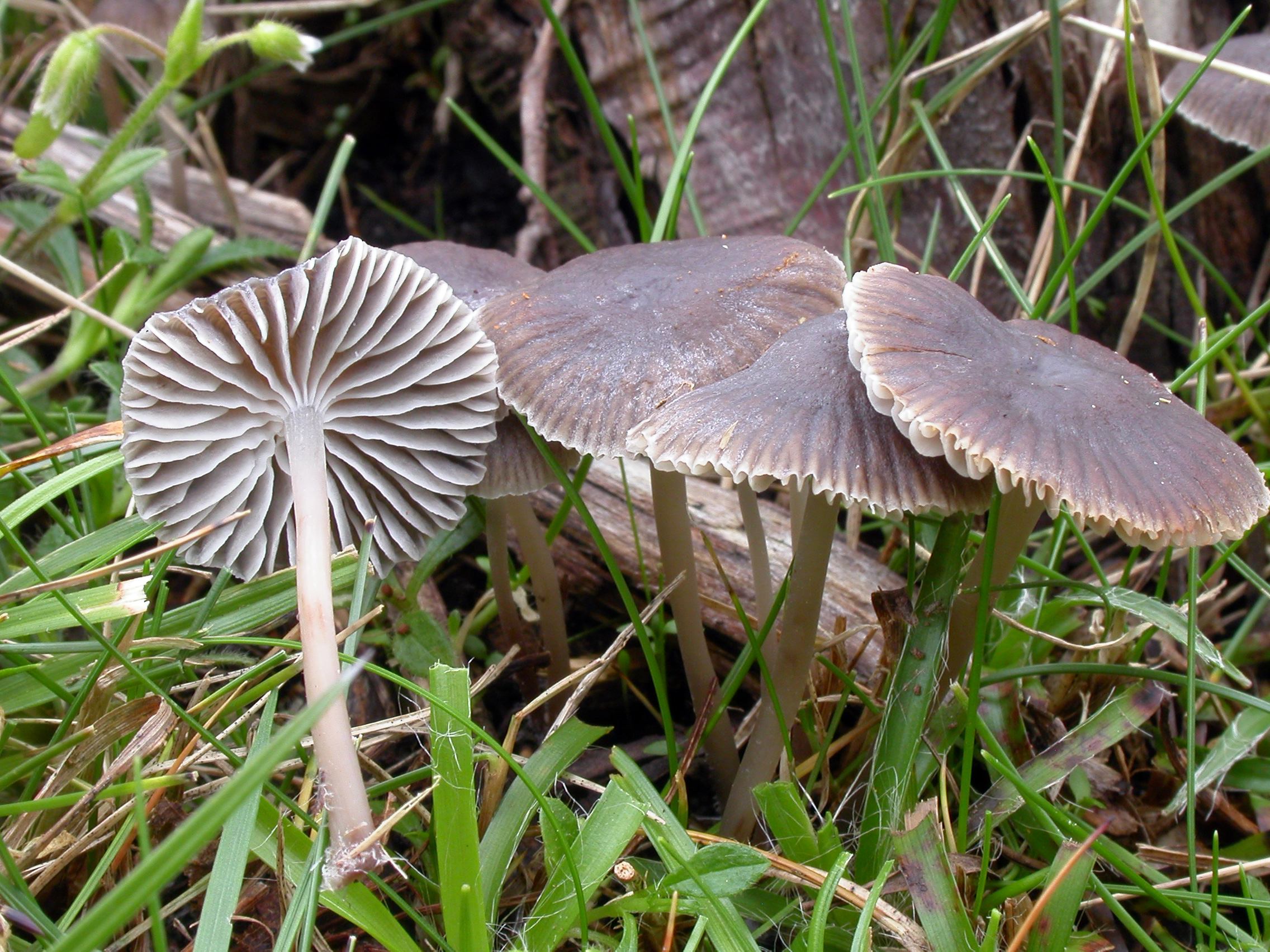Mycena latifolia
Mycena latifolia
Description
Cheilocystidia.
Cap 5-25 mm across, conical, parabolical to convex, often flattened to somewhat depressed, or sometimes with a shallow umbo, sulcate, translucent-striate, pruinose but soon glabrous, hygrophanous, blackish brown to dark brown with whitish margin, with age often paler. Gills 14-23 reaching the stem, adnate to broadly adnate, more or less decurrent with a short tooth, dorsally intervenose with age, whitish grey to dark grey with whitish edge. Stem 20-70 x 0.5-1.5 mm, cylindrical, equal, elastic-firm, pruinose above, glabrous for the greater part, somewhat lubricous when wet, when young bluish black to blackish grey at apex and greyish to pale grey-brown below, with age more or less greyish or brownish grey with paler apex, the base densely covered with long, flexuous, white fibrils. Odour none or somewhat farinaceous. Taste mild, indistinctive. Basidia 29-39 x 6-7 µm, slenderly clavate, 4-spored. Spores 7.2-10 x 4-5.5 µm, Q = 1.7-2.5, Qav ˜ 2, pip-shaped to subcylindrical, amyloid. Cheilocystidia 40-85 x 6-23 µm, occuring mixed with basidia, fusiform, lageniform or clavate, long- to short-stalked, thin-walled or with slightly thickened cell walls in the widest part, smooth or covered in the widest part with few to fairly numerous, straight to curved, fairly short excrescences 1.5-3.5 x 1-2 µm. Pleurocystidia numerous, similar to the fusiform or lageniform cheilocystidia, up to 100 µm long, smooth or covered with excrescences in the wider part. Lamellar trama dextrinoid. Hyphae of the pileipellis 2.5-3.5 µm wide, covered with simple to densely branched excrescences 1-27 x 1-2 µm, somewhat gelatinized. Hyphae of the cortical layer of the stem 1.5-4.5 µm wide, smooth to diverticulate. Clamps present in all tissues.
Ecology and distribution
Gregarious in moss or grass in open grassland or on or among fallen needles of various coniferous trees, also in mires. Autumn. Rare in Norway.

